Pellets
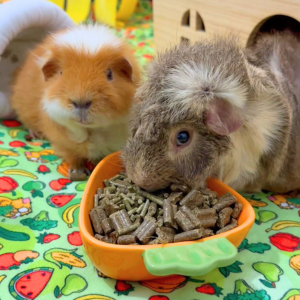
Guinea pig pellets are essential for supplementing their daily nutritional needs, particularly vitamin C, which guinea pigs cannot produce naturally. These pellets are typically made from timothy hay for adults, or alfalfa for young, pregnant, or nursing guinea pigs. High-quality pellets should be primarily hay-based with formulated Vitamin C, and should be free of artificial colors, added sugars, grains, seeds, nuts or dried fruit.
The nutritional content and ingredients must be clear on packaging, and checked to ensure the correct amount of calcium, phosphorus, fibre, fat and protein is mentioned and in the right ratios (more on that below).
Guinea pig pellets provide crucial nutrients but should be offered in moderation alongside unlimited hay and fresh vegetables. Overfeeding pellets can lead to obesity, so portion control is important!
Choosing the right bowl plays a part as well; make sure it's either heavy ceramic or a 'non-tip' design to ensure your piggies have easy access to their pellets.
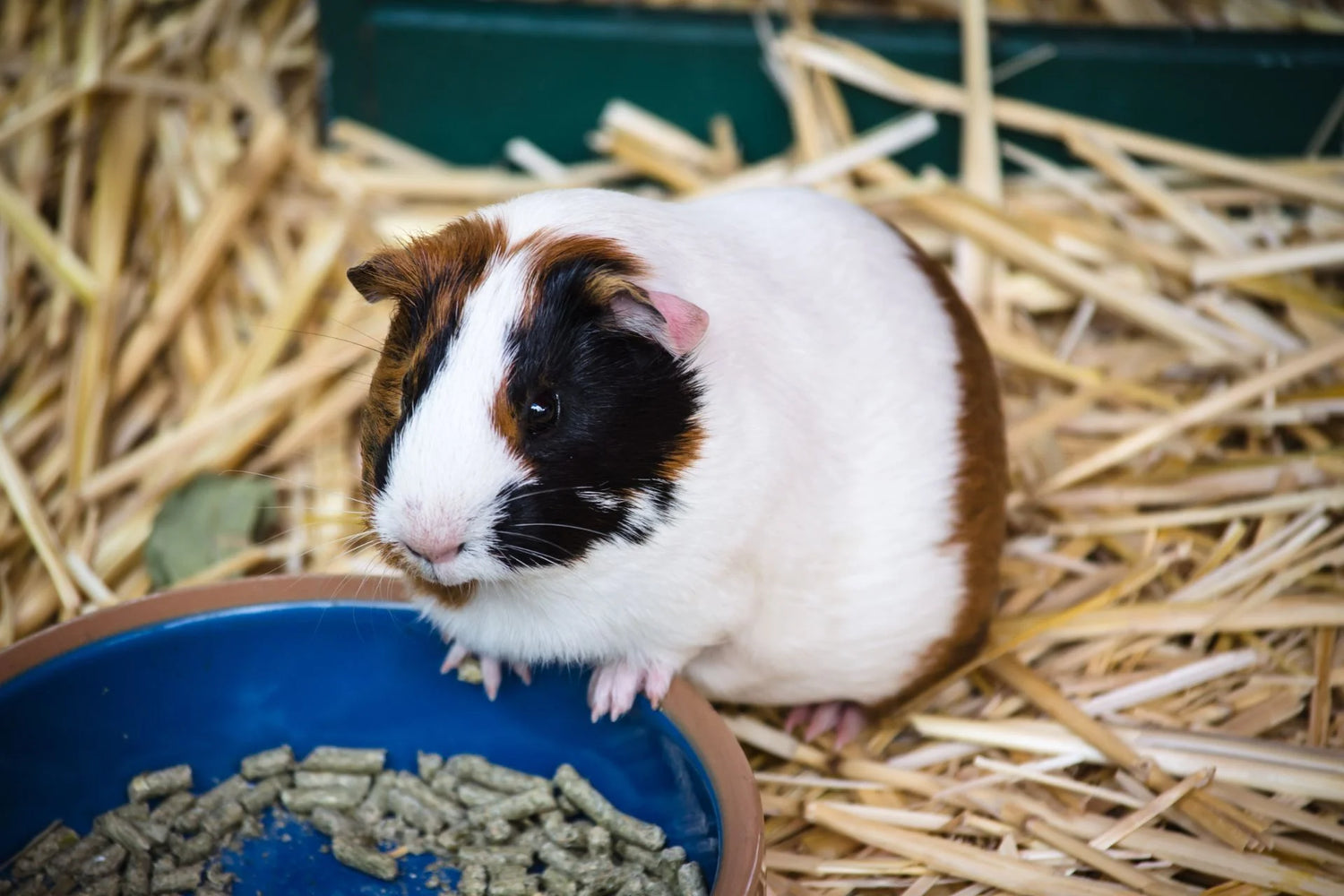
IMPORTANT INFO!
⚖️ Why Are Ratios Important?
The ratios of different components in guinea pig pellets like calcium, phosphorus, fats, fibre, and protein are important to ensure your piggies are getting the correct balance of nutrients they need and don't contribute to any health issues.
If there's too much calcium and not enough phosphorus, it can lead to bladder stones and other urinary issues.
High fibre (at least 20%) is key for good digestion and preventing obesity, while the right amount of protein (about 15%) supports growth without causing them to get overweight. 💡 TIP: The fibre content should always be higher than the protein content!
Fats should be kept low since guinea pigs don't need a lot of calories. Plus, Vitamin C is a must because guinea pigs can't make it on their own, and they need it to avoid conditions like scurvy.
The correct balance of all these components in piggy pellets ensures they get all the nutrients they need without any health problems!
🤷♀️ What does Fibre, Protein, Fat etc. do for Piggies?
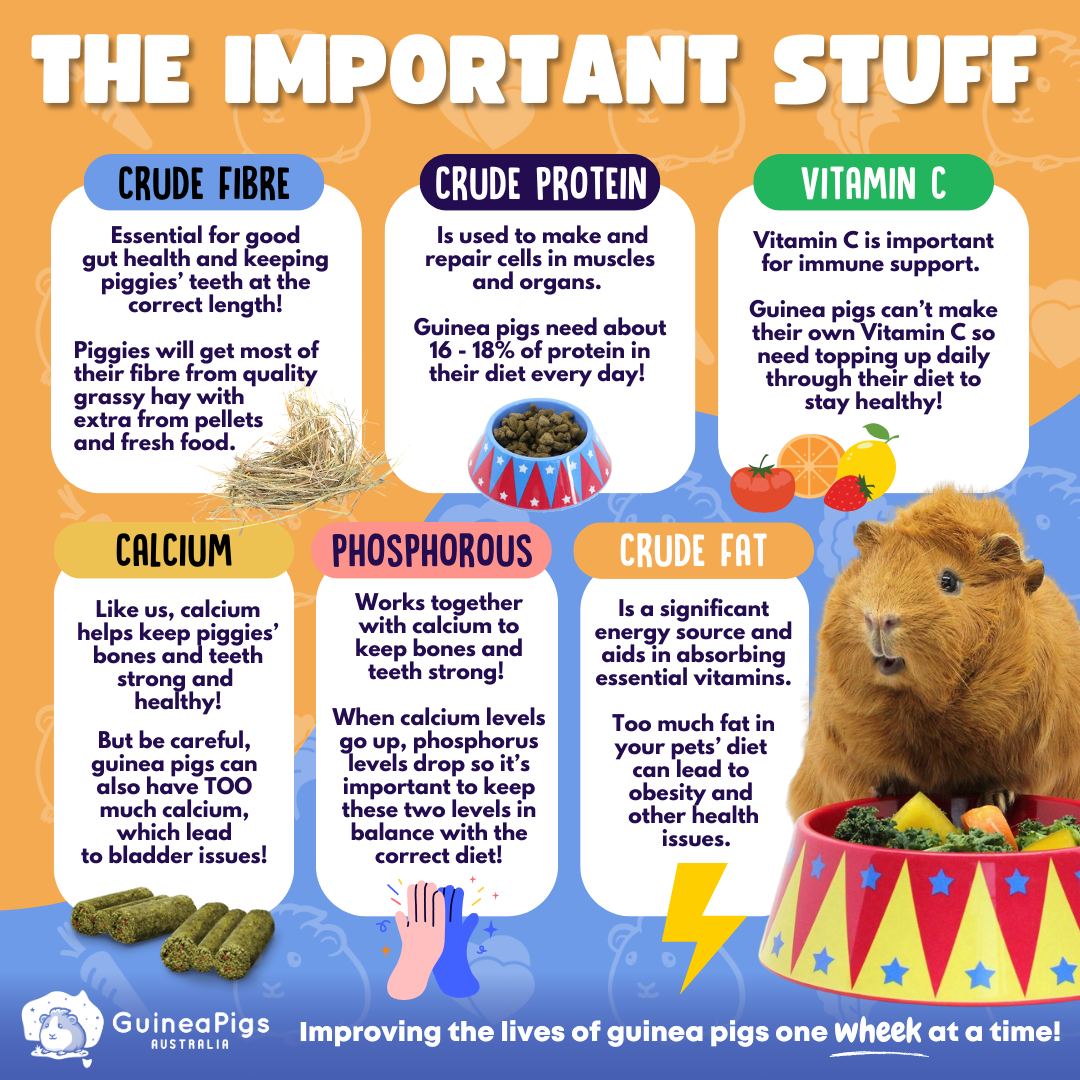
A good indicator of quality pellets is clear and comprehensive breakdown of nutritional components on the packet.
Cheaper mixes will often state things such as: 'includes vitamins and minerals, ascorbic acid etc' but do not specify amounts, specific ingredients or percentages. This can often be because of variation of ingredients due to seasonal availability, which in turn does not guarantee you a consistent nutritional value or quality of ingredients each time.
In short: Always make sure that any pellet you purchase has listed ingredients and nutritional percentages clearly marked on the packaging!
If you can't see them listed anywhere, or the information is vague or generalised, chances are they are NOT a good choice for your guinea pig!
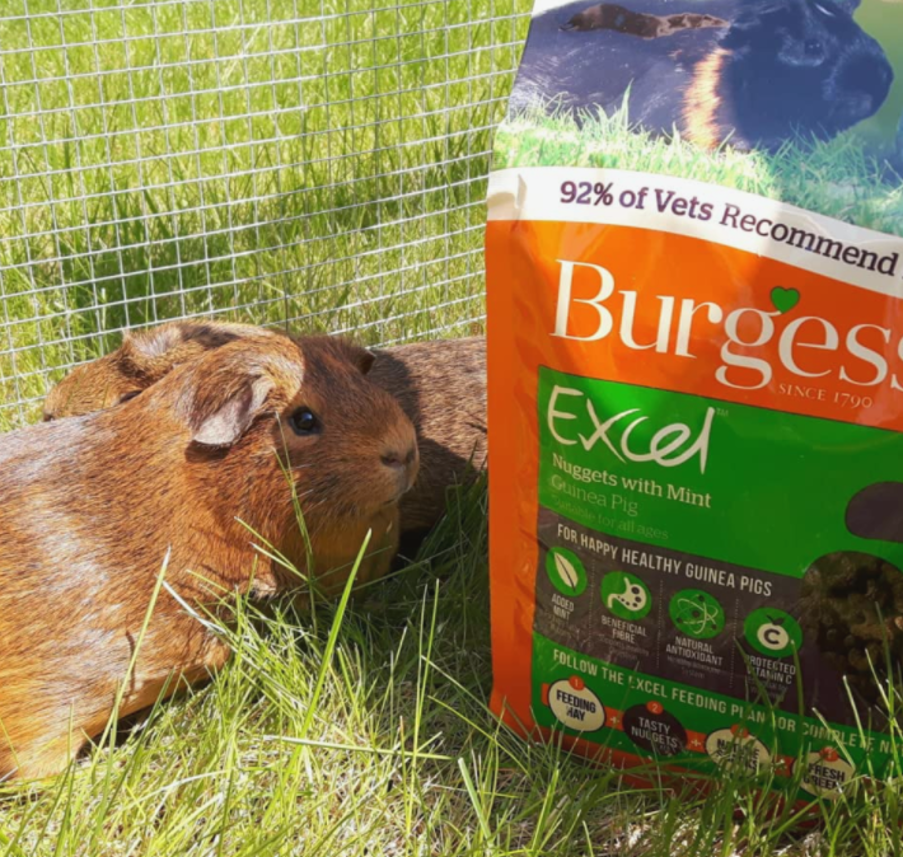
Types of Pellets
Quality pellet brands often have varieties that cater to specific pets' ages.
Primarily lucerne-based pellets are ideal for young, pregnant or nursing piggies due to the higher calcium and protein content, which important for growing guinea pigs.
Once your guinea pig reaches approximately 6 months of age, you can slowly introduce and mix in a Timothy-based pellet. Timothy pellets offer adult guinea pigs a lower intake or protein, calcium and carbohydrates which is good for their digestive system.
Storage and Quantity
1/8 of a cup of pellets, per piggy, can be fed daily in addition to fresh vegetables and hay. Pellets should be stored in a cool dry place, not in direct sunlight. To prolong the freshness of your pellets, seal in an airtight reusable bag or container after opening.
🚫 Types of Mixes To Avoid

There are a lot of cheap pellets and muesli-type mixes that are marketed to guinea pigs, but are more often than not, an unsuitable choice for your piggies.
You'll often see brands (usually in supermarkets) that are labelled as a 'general rodent' pellet or mix, but these aren't great as all rodents have unique dietary needs. Where rats and mice can safely munch away on mixed seeds, nuts and grains, this can be a choking hazard for guinea pigs. Where guinea pigs need supplemented Vitamin C, rabbits do not require this.
It is important to have uniform pellets that are catered specifically for guinea pigs, as these contain the right balance of nutrients for your pets and avoids selective feeding.
When choosing your piggy pellets, steer clear of these ingredients:
❌ Added sugars (like molasses or corn syrup)
❌ Artificial colors and dyes
❌ Seeds or nuts (high in fat, can cause choking)
❌ Animal by-products (guinea pigs are herbivores)
❌ Dried fruit (high in sugar)
❌ Grains (like corn, rice, wheat, or soy)
❌ Unspecified "by-products" or fillers
❌ High calcium content
❌ Preservatives (like BHA, BHT, or ethoxyquin)
Read more below on the best brands of pellets we recommend for your guinea pigs!
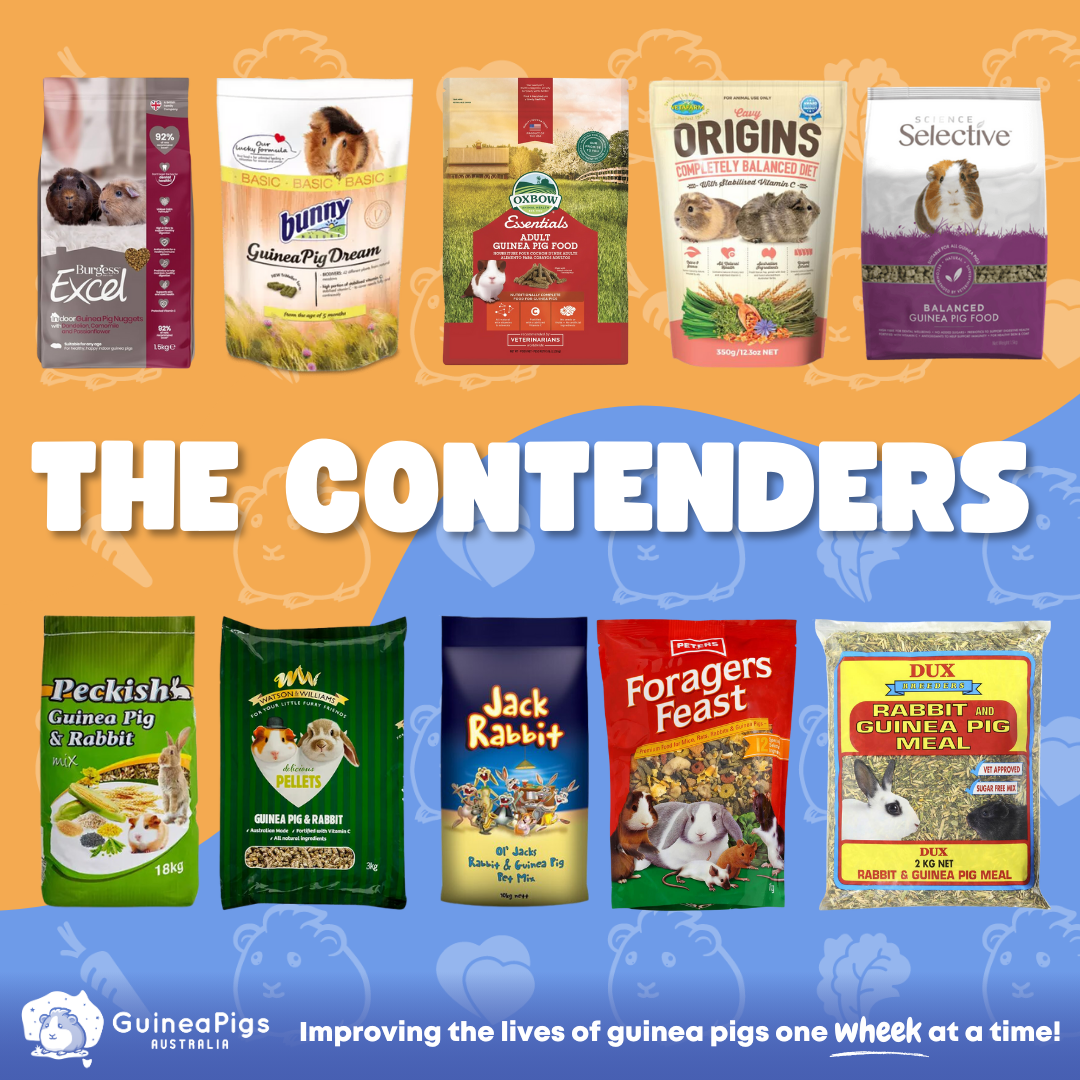
Piggy Pellets on the Market
Above are some of the range of pellets, both good and bad that you'll find in pet stores and supermarkets around Australia.
Be wary - just because they're on a shelf with a guinea pig on the packaging does not always mean it's a suitable option for piggies!
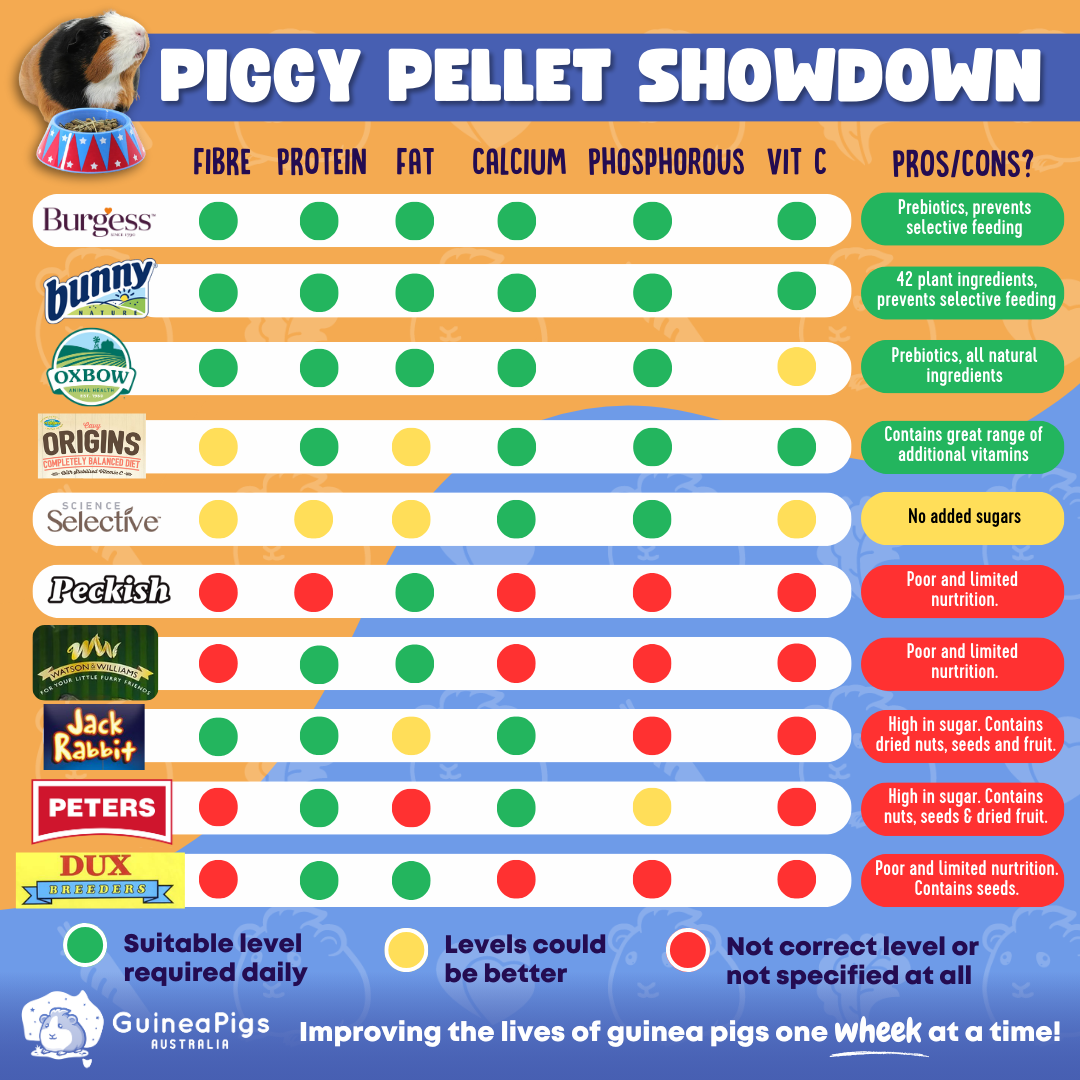
Nutrition Breakdown
We've taken a handful of common pellets and mixes you'll find on the Australian market and dissected their ingredients and nutrition. As you can see, some brands have a much better balance of components compared to some, so it's essential for you to check these before feeding your piggy!
So Which Brands are Best?
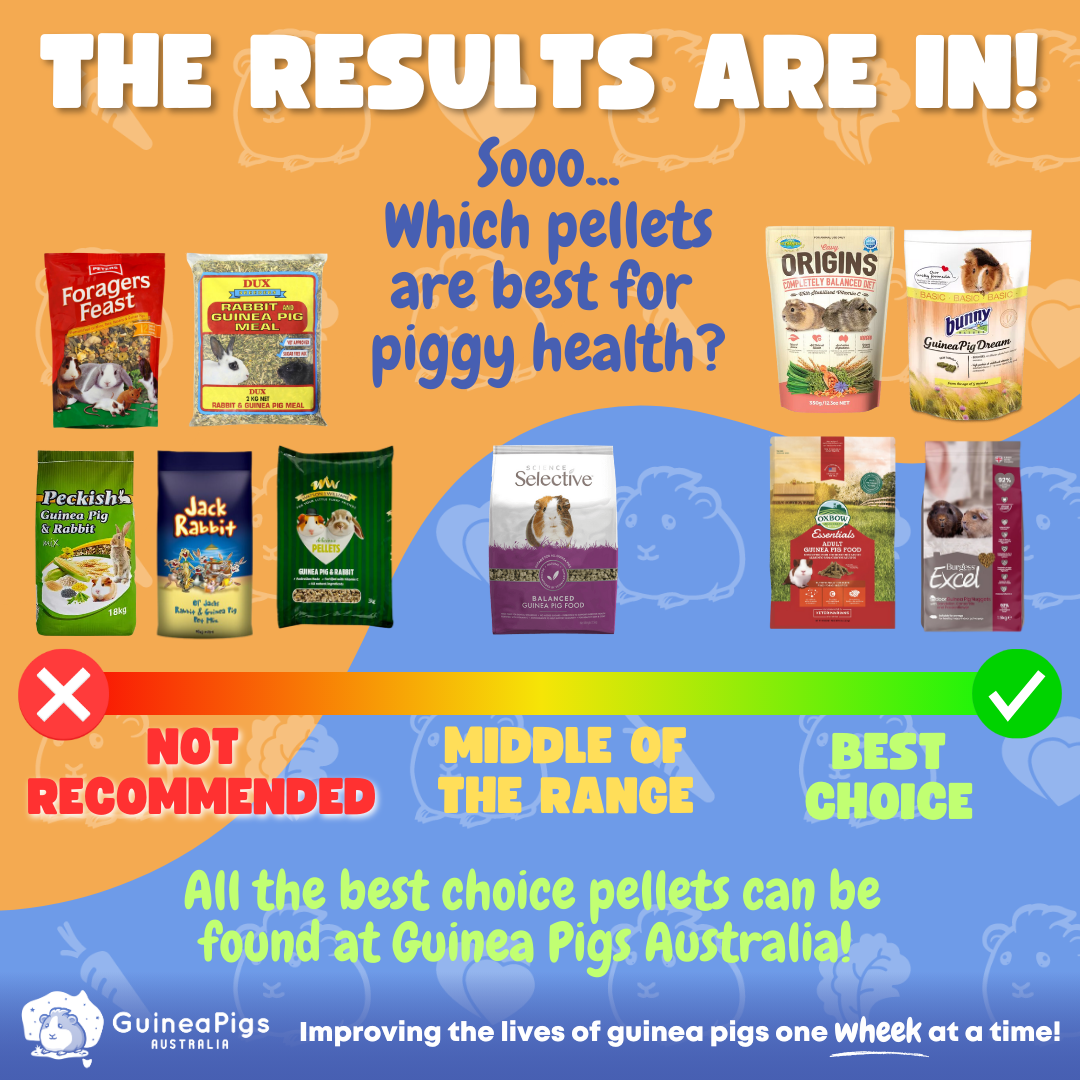
The top pellet brands that Guinea Pigs Australia and Australian vets recommend, each with optimal nutrition and taste for your piggies:
Burgess Excel
Bunny Nature
Oxbow
Cavy Origins
It's important to remember that while pellets are a small part of a guinea pig's diet, they provide extra nutrients and vitamins they might miss out on with just hay and veggies.
So, let’s make sure they get the best!
with Dr Sam
CHOOSING THE RIGHT PELLETS
Join Dr Sam as she covers some of the things to look for in a quality piggy pellet.


















